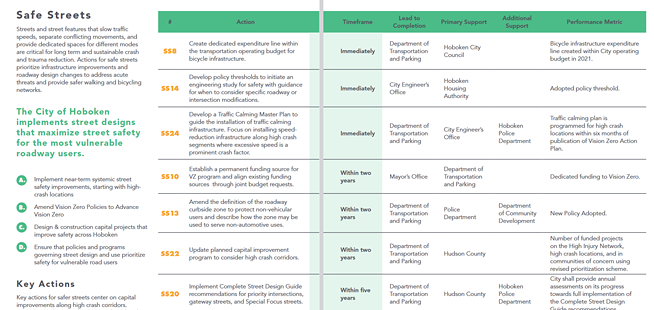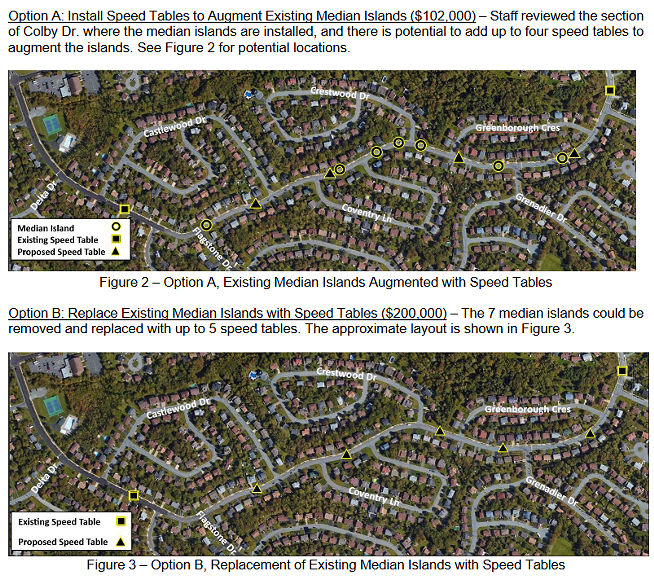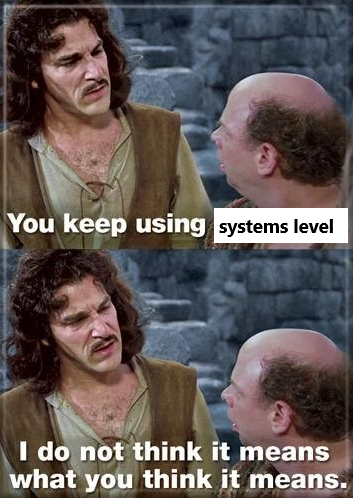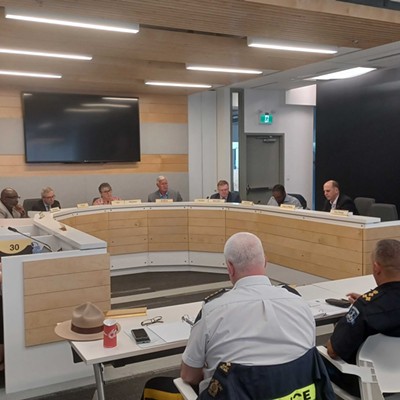On Wednesday, June 19, Halifax’s Transportation Standing Committee met and watered down the city’s Strategic Road Safety Framework. During the debate, the HRM’s newly promoted executive director of Public Works, Lucas Pitts, told councillors that this new plan was an upgrade because it was a “systems-level approach” to road safety.
When debating the new framework councillor Trish Purdy asked Pitts if any city had managed to avoid killing people on public infrastructure and if so “what are they doing and can they maintain that for more than one year?” Pitts responded that yes, there was one place called Hoboken, New Jersey which has managed to avoid killing anyone with public infrastructure for the past seven years. But, in a scathing indictment of his fitness for his new title, Pitts told councillors that Hoboken succeeded by “cheating” because they have narrower roads which are only about eight feet wide. Whereas when Halifax was updating our municipal Red Book, which could also be considered a road safety Game Genie, we decided not to activate the God Mode cheat and make our car lanes eight feet wide. Instead when our city staff and councillors last updated the game genie in 2021 we for no real discernible reason, chose not to do what has been successful elsewhere and instead chose the more fatal width of nine feet and 10 inches, or three metres. Instead of “cheating” and making our lives safer we’re upping the stakes and letting a few more people die some preventable deaths to feel a greater sense of accomplishment when we fix something we could fix at any time but are choosing not to.
This new road safety framework was deferred from May’s meeting of the Transportation Standing Committee because local advocacy groups, like the Halifax Cycling Coalition, said the city should be measuring progress in absolute terms instead of gauging the plan’s success on a year-over-year per capita reduction. At that meeting, staff told the committee that there are advantages to using the per capita system, specifically that we could compare ourselves to jurisdictions of other sizes and learn lessons from their success. And if Halifax’s city staff had compared Hoboken’s success with our failures it’s very easy to see why they have been successful and Halifax has not.
While it is true that the speed of Hoboken’s success is likely due to its smaller size, the reason for its success is that its road safety plans are just miles better than anything so far produced by the city of Halifax. For example, here’s the entirety of Halifax's safe roads section of our new road safety framework
And here’s part of Hoboken’s safe streets section

After about 30 seconds of comparison between the two road safety plans what becomes very clear is that Halifax city staff say we have a systems-level approach to road safety, but Hoboken has an actionable plan, people responsible for enacting that plan, and a timeline for when it needs to be enacted. Hoboken is not cheating, their city staff just understood the assignment given to them by their council whereas Halifax’s city staff does not.
With apologies to people who understand this already, it’s important to understand what’s wrong with our system and to understand what a systems-level approach is before it’s possible to explain what our staff would be doing if our government was also firing on all cylinders.
Like the city of Halifax, Hoboken has created a lot of strategic plans that can be compared to things like Halifax’s Integrated Mobility Plan, Bus Rapid Transit, The Green Network Plan, or the initial 2018 Strategic Road Safety Framework. Their plans, like our plans, looked at our transportation system, figured out what the issues were for its slice of the problem, and then proposed ways to fix them. In a systems-level approach, like the one in Hoboken, strategic plans are then compared with each other to identify common issues in the transportation system. Any government that has ever done this, including Halifax and Hoboken—but also Wales and Paris—have found that almost all of their transportation issues can be traced to the size, volume and speed of automotive traffic. And that due to the independent and hard-to-police nature of automotive transportation, the only reliable way to make transportation cleaner, safer, and fiscally viable as a municipal service is to remove the volume of cars and to physically restrict the movement and speed of automotive traffic. And the best way to remove cars is to do things like provide safe alternatives to car travel or stop subsidizing automotive transportation.
The difference is that Hoboken’s bureaucracy took the lower-level action plans and the lessons learned by all the plans and folded them into a coherent strategic plan to make their transportation system safer.
And at this juncture, it’s probably easier to show what recent staff proposals would have looked like if Halifax had a functioning systems-level approach to transportation planning.
Also at Wednesday's committee meeting where Halifax regressed on road safety there was an information item brought forward about Colby Drive in Cole Harbour. The city installed traffic islands as a pilot and everybody hates them. People are mad that they have to pay to block the road now whereas it was free to do before and the islands didn’t really have an impact on vehicle speeds. In the report, staff come up with some options to slow down vehicle speeds including adding speed humps to the existing islands, removing the islands and putting in speed humps or removing everything.
Halifax’s Bus Rapid Transit will cost $100 million(ish) to buy all the land required to avoid doing road diets, but even so, there are still choke points that will sink Halifax’s ambitious if mildly unsexy rapid transit plan. Right now staff are working on designs to fix two of them: the MacDonald Bridge and the Windsor Street Exchange.
So the good news is that as of Wednesday June 19, 2024 Halifax has a system-level approach to road safety. And one of the best ways to remove car traffic to improve road safety is to provide better alternatives, and the best way to make the bus a better alternative is to give buses dedicated space to get through the geographic choke points in the HRM. And in the case of the Windsor Street Exchange staff have been explicitly instructed, again, for like the fourth time since 2012, to prioritize bus traffic. We should see staff come back to council with plans for both choke points that give dedicated, continuous road space to bus transit. Unless, of course, we still don’t actually have a systems-level approach to road safety.
Joking aside, there is also good news and a test for staff that came out of this meeting. Councillor Sean Cleary decided to take a page out of Paris’ playbook and he put forward a notice of motion. At the next meeting, he’ll instruct staff to come up with parking fees for on-street permit parking that costs more for larger and heavier vehicles. The good news is that now that we have a systems-level road safety framework in place we can expect staff to come up with fees for large vehicles that are prohibitively expensive and well over $200 a month.



















